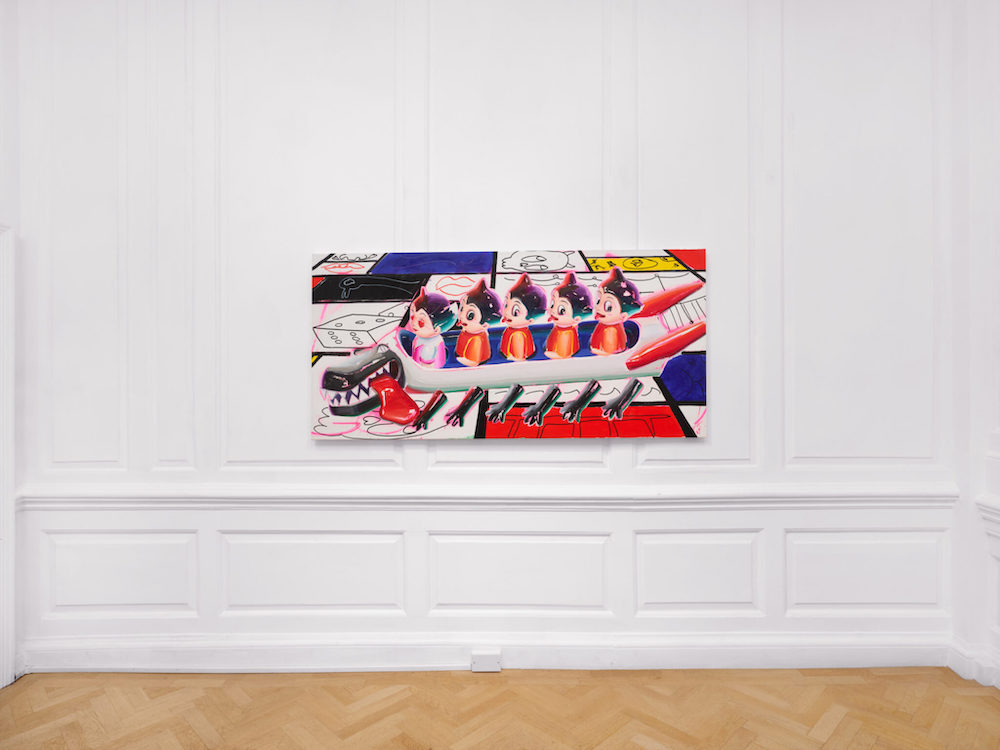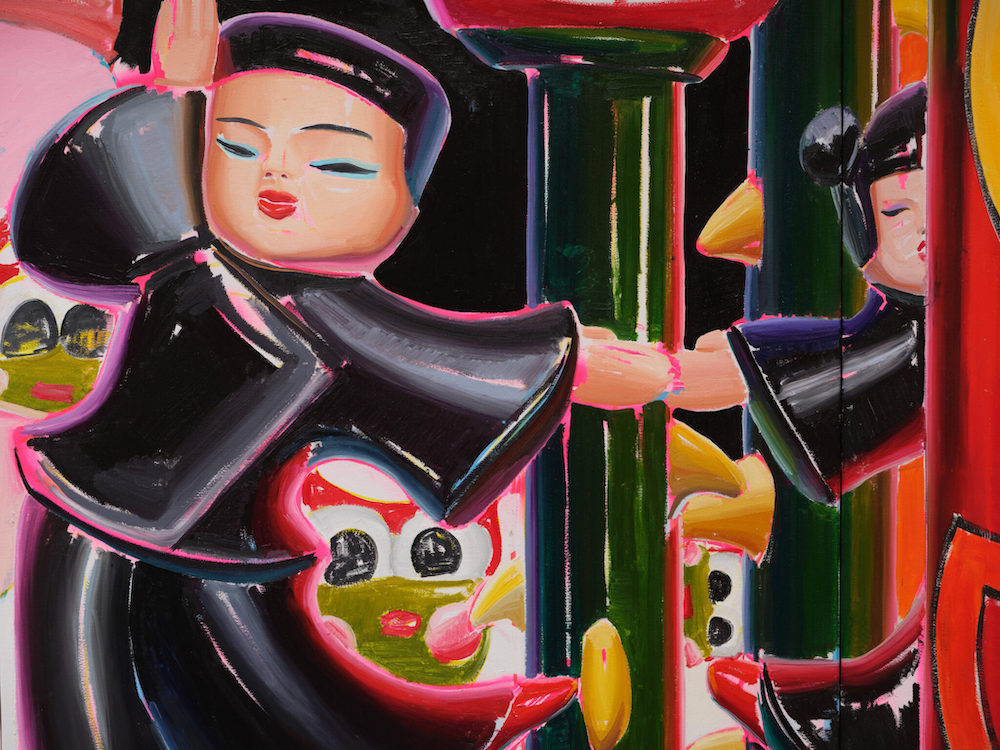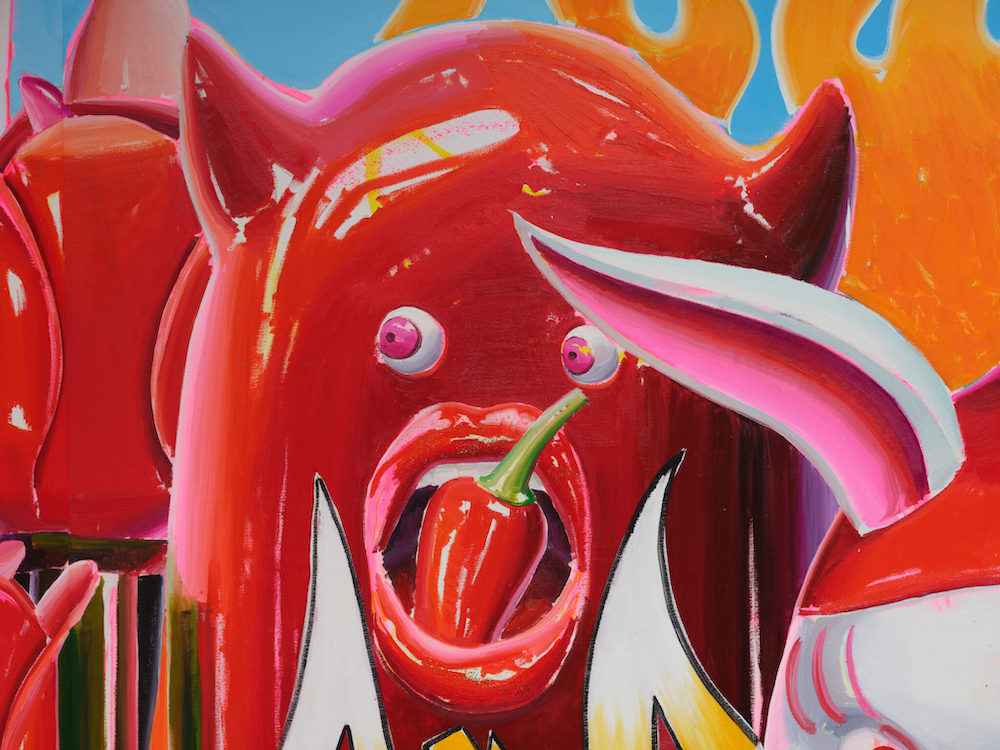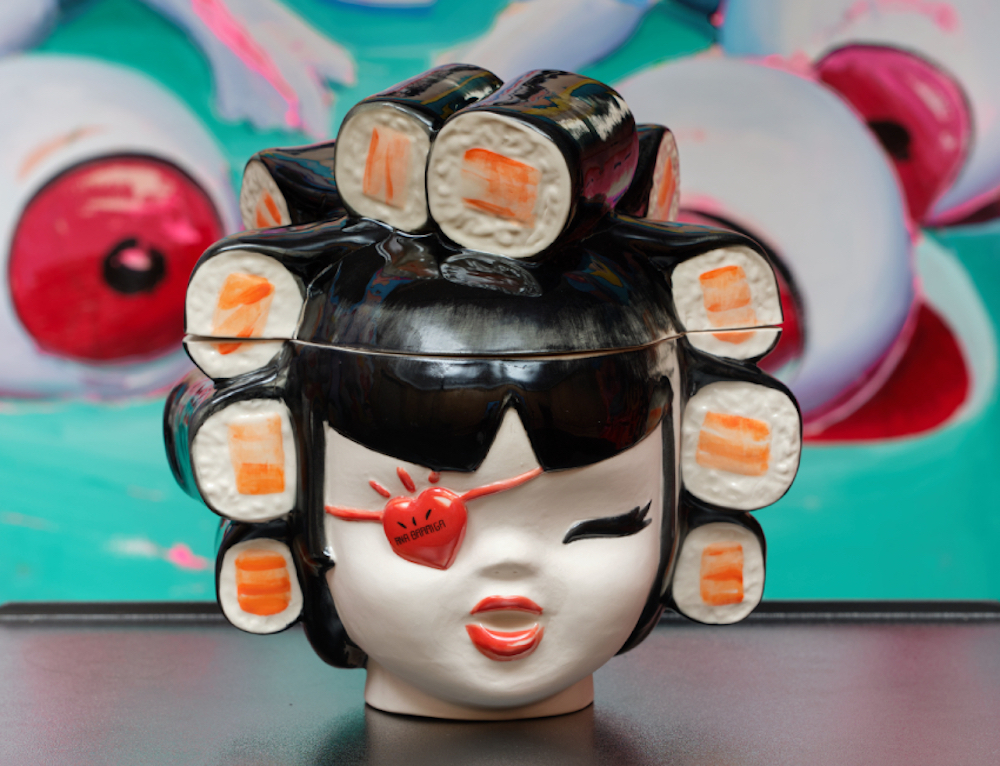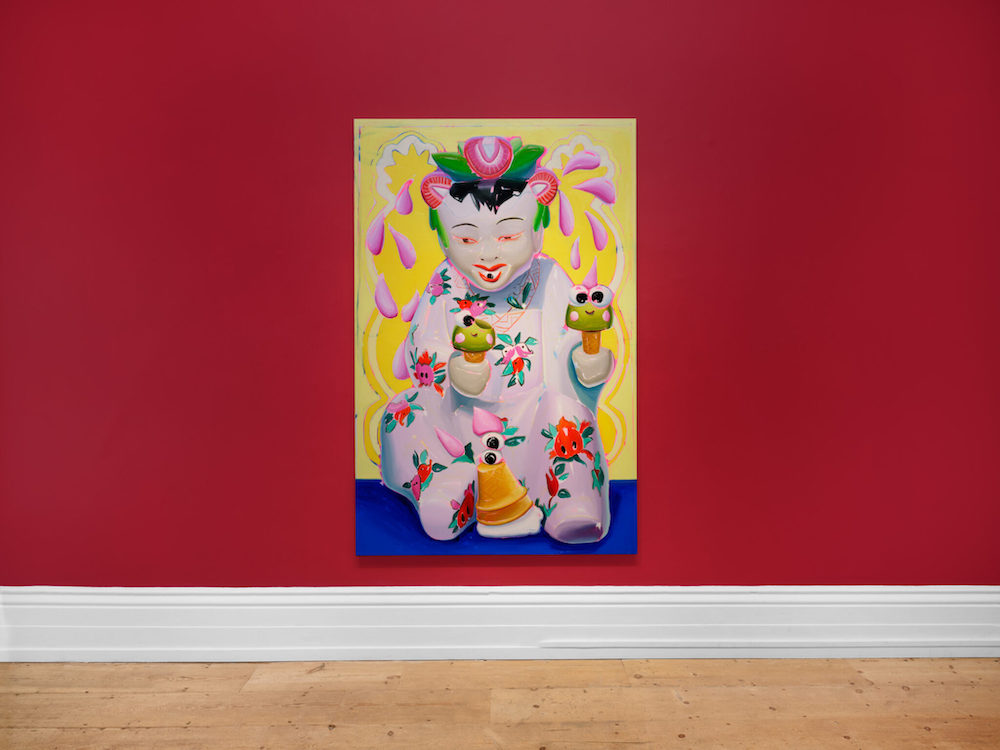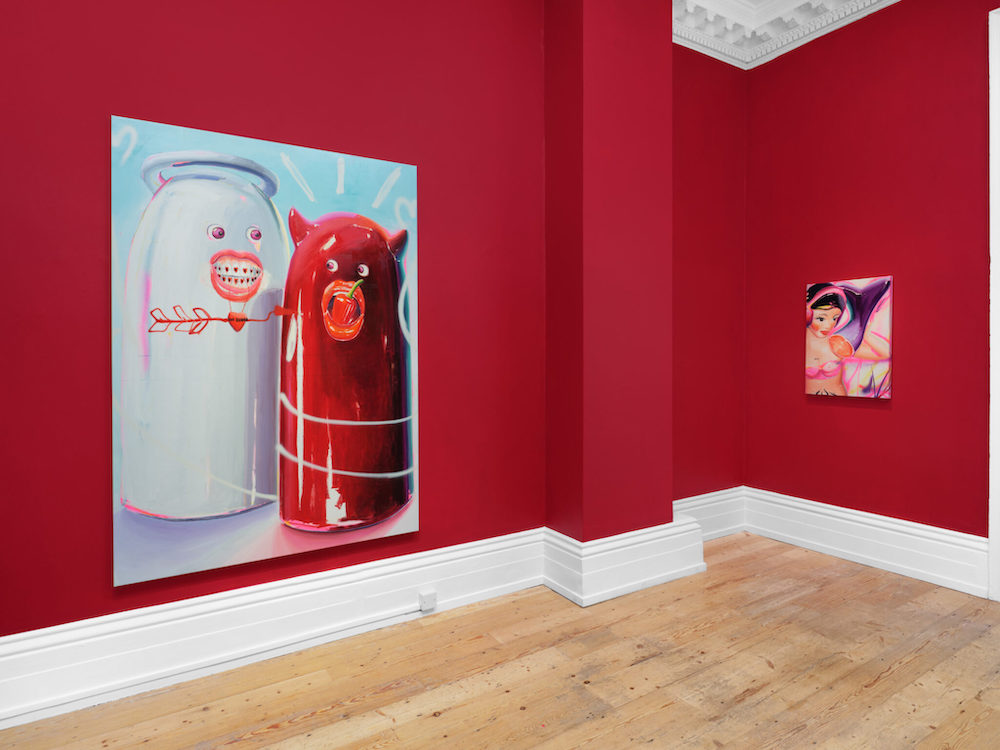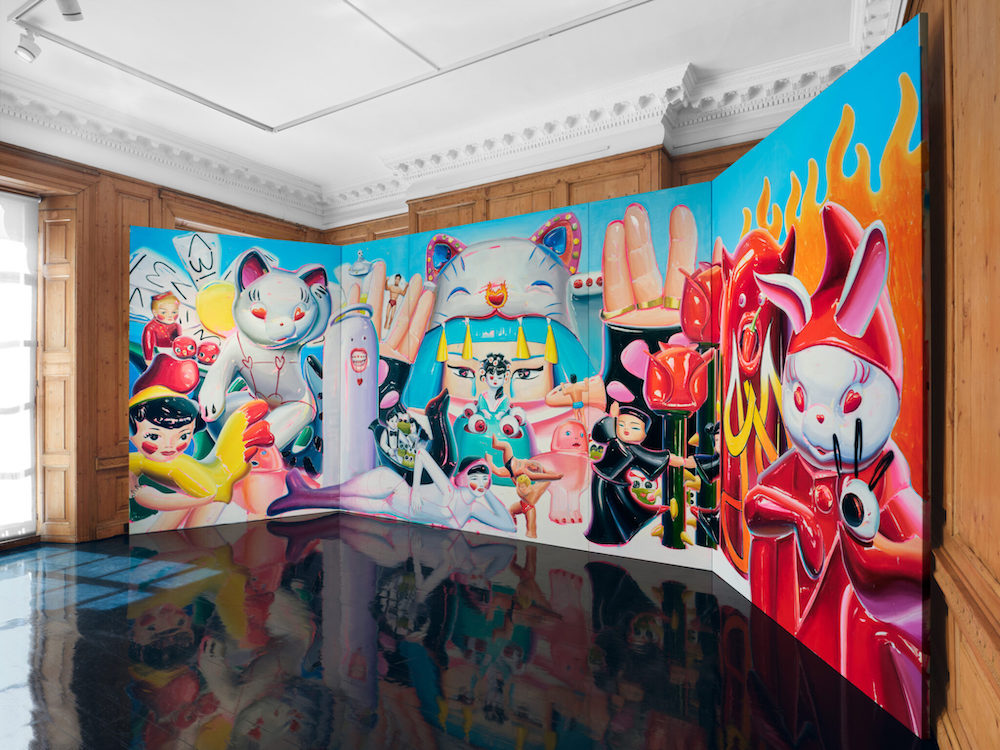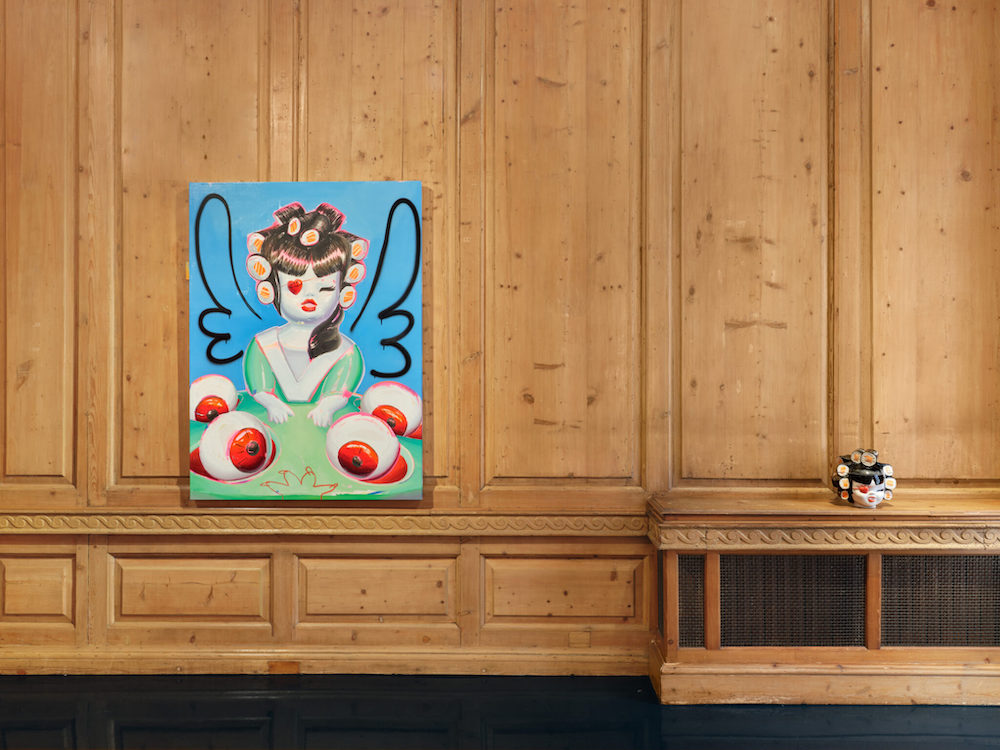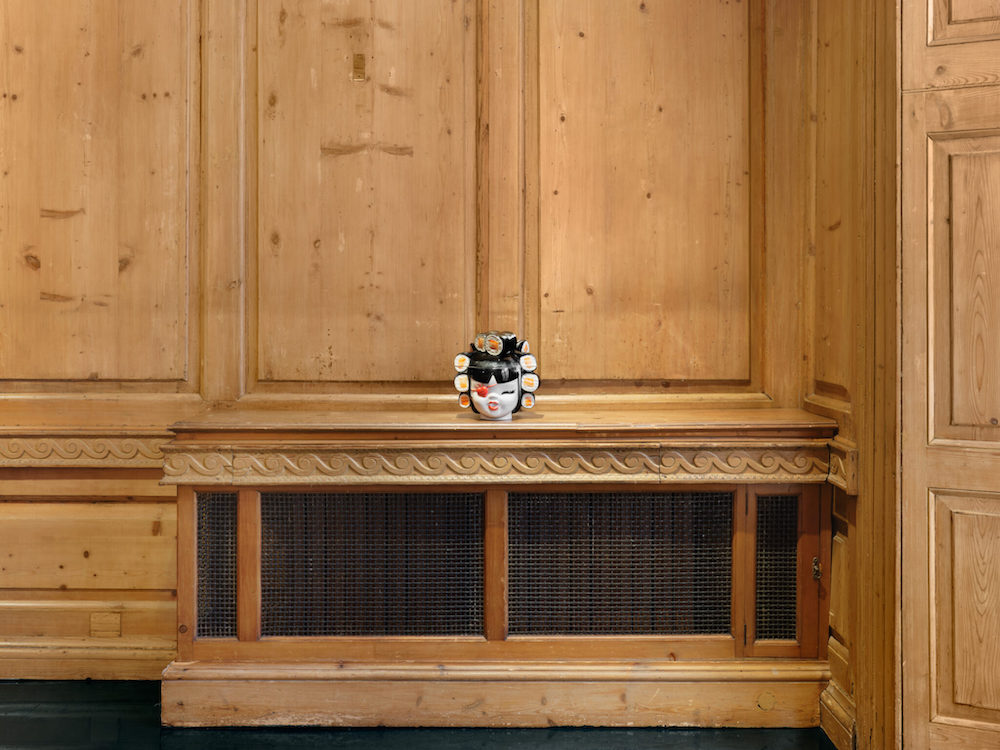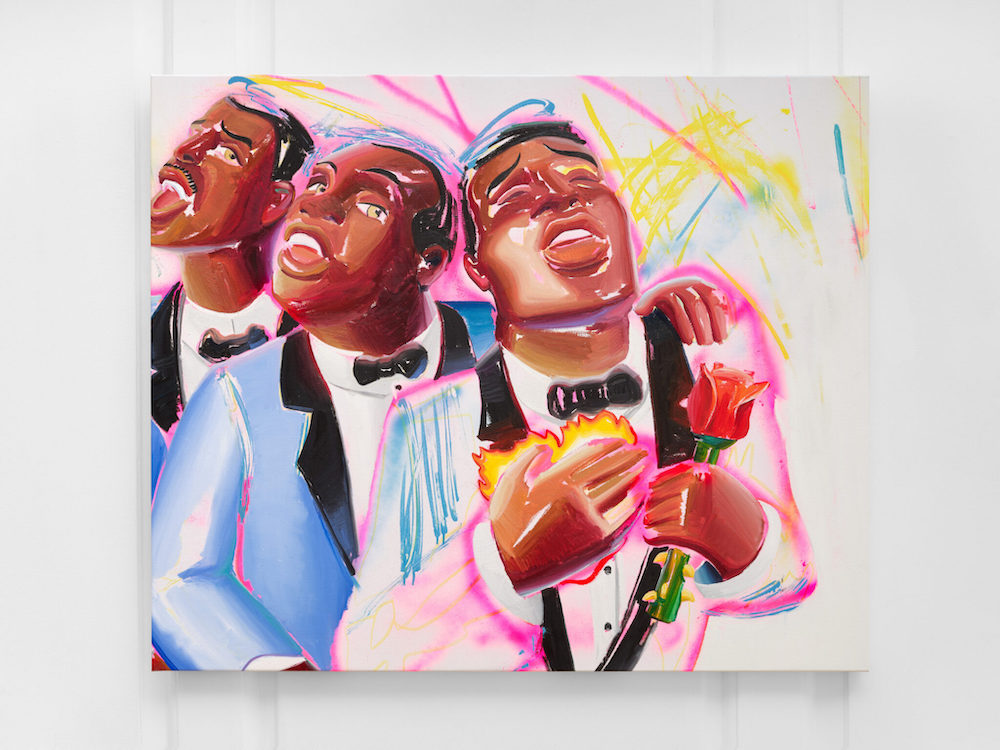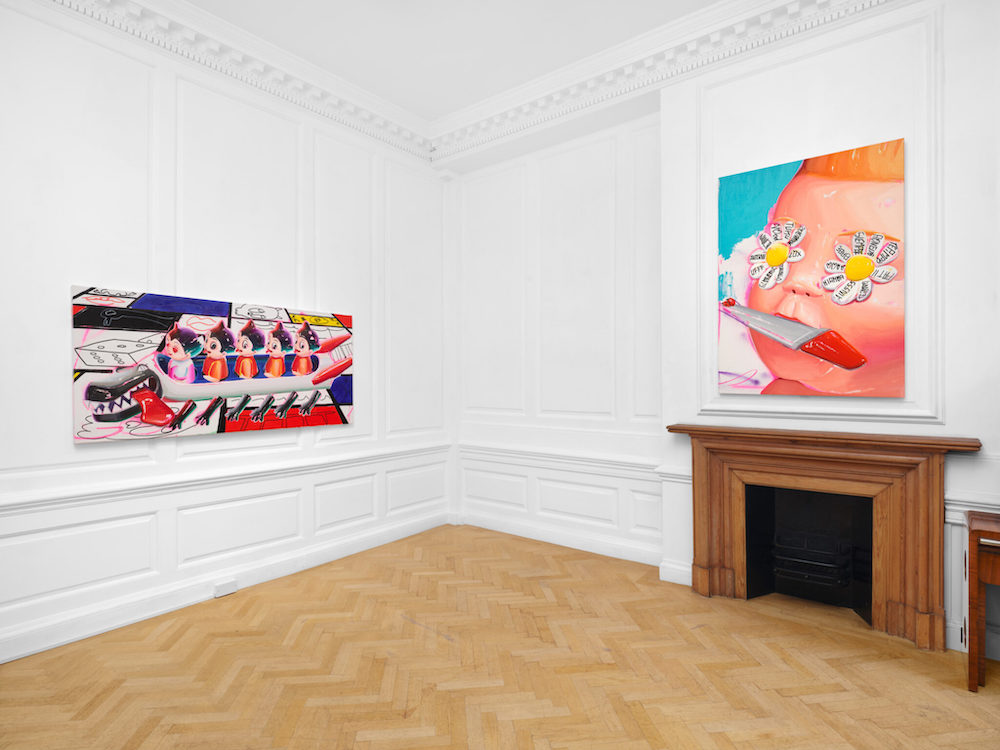“My work involves instinct and attitude," Ana Barriga says as she was opening her solo show, Say Cheese, at Carl Kostyál in London. "This happens not only when I’m in search of the right object, which is when I’m in huntress mode, when I’m super focused on precisely identifying and capturing the day’s prey. That’s also the attitude that I have when I’m painting.”
A colorful juggernaut of a painter’s painter who flourishes in mobile studio mode while admixing what used to be termed hyperrealism and rummage-sale-inflected pop, her generative example inspires a correction to the verse’s celebrated reprise. Put succinctly, the Spaniard’s is a spirited case of the heart as a happy huntress.
Barriga’s paintings, which a close friend of hers pegged perfectly—along with their creator—as both “pretty and raffish,” begin with what the artist terms “bits of reality that no longer mean anything.” By this she means plastic figurines, tchotchkes, porcelain doo-dads and bits of bric-a-brac she encounters on regular visits to flea markets, souks, bazaars, rastros and marchés au puces. These she “sources,” “breaks,” “paints,” “manipulates” and otherwise “transforms” into tabletop arrangements, which she then photographs to use as jumping off points for her celebrated oil and enamel canvases of smudged, graffitied, sprayed and otherwise altered kitsch fantasias.
Barriga’s interventions accentuate and transmogrify the meanings of her irremediably secondhand, erstwhile personal objects. Restaged by the painter like so many multicolored troll dolls, her objets trouvés acquire ever-novel combinatory meanings—think hand painted tarot cards regularly scattered and put back together—while suggesting, among other referential possibilities, the sincere embrace of homage and the pleather lash of ironic distancing. Yet there remains throughout the artist’s streetwise borrowings a nod toward painting’s history. Picture Giorgio Morandi still-lifes animated by maneki-neko cats, M&M colored statuary and devilish putti.
“I consider myself a hunter, [someone] who selects the best objects that society has thrown out,” Barriga told one interviewer about her magpie aesthetic and layered painterly process. “I intervene them in a playful way, with sarcasm and irony, and this allows me to remove seriousness from important subjects such as death, sexuality, or religion. The way I manipulate these objects, the way I paint and cover them with my own designs, besides pointing to the way in which I conceive the creative act, possibly point to the way I conceive of life itself.”
Barriga has described her introduction to painting as an Alice In Wonderland moment, a free-fall into an agujero negro maravilloso, which in English translates into “a marvelous black hole.” By this she means that the practice of painting presented to her younger self equivocally as both a dare and an abyss.
The daredevil leap into the void has been Barriga’s modus operandi ever since. It has led to an abundance of gallery and museum exhibitions in cities like Madrid, Paris, New York, London and Seoul, and to several recent reputation-enhancing projects. Among these are a nearly fifty-foot work she painted for the Centro Andaluz de Arte Contemporáneo (From Animals to Gods, 2019), several outdoor murals she made for different foundations in Valencia, Madrid and Roubaix (she gifted this last city a stylized siren and three smiling cats which she fittingly titled A World For You, 2021), and an eight-foot sculpture of a splayed feline (Laki Cat, 2020) for which she cannibalized her own ludic 2D imagery (notably, she self-financed the XL freestanding object before it was successfully editioned by a Hong Kong multiples company). Because Barriga’s Chesire blithely exposes its viscera—a four-leaf clover represents its lungs, an elephant its liver, and a rainbow its snaking intestines—the figure reads alternately toy-like and grimly anatomic. Think Takashi Murakami and Nikki de St. Phalle channeled through SalvadorDali’s gruesome Soft Construction with Boiled Beans (Premonition of Civil War) (1936).
Arguably, what Barriga does is return “life” to the basic conception of the still-life in our own age of mass production and profligate disposability. Not unlike her predecessors Juan Sánchez Cotán, Jean Simeón Chardin and the aforementioned Morandi, the Jerez native assembles—some might even say hoards—signal materials to represent both the society in which she thrives and a worldview that, for all its celebrations of gimcrack, teems with critical irony, even satire.
In so doing, Barriga arrives at her own version of an upcycled, 21st century, luminous baroque—a style that casts her in the eternal role of happy huntress, and the world’s legions of humble cast-offs as joyous prey. Few painting projects appear as radiantly cheerful or as powerfully allegorical today. —Christian Viveros-Fauné



